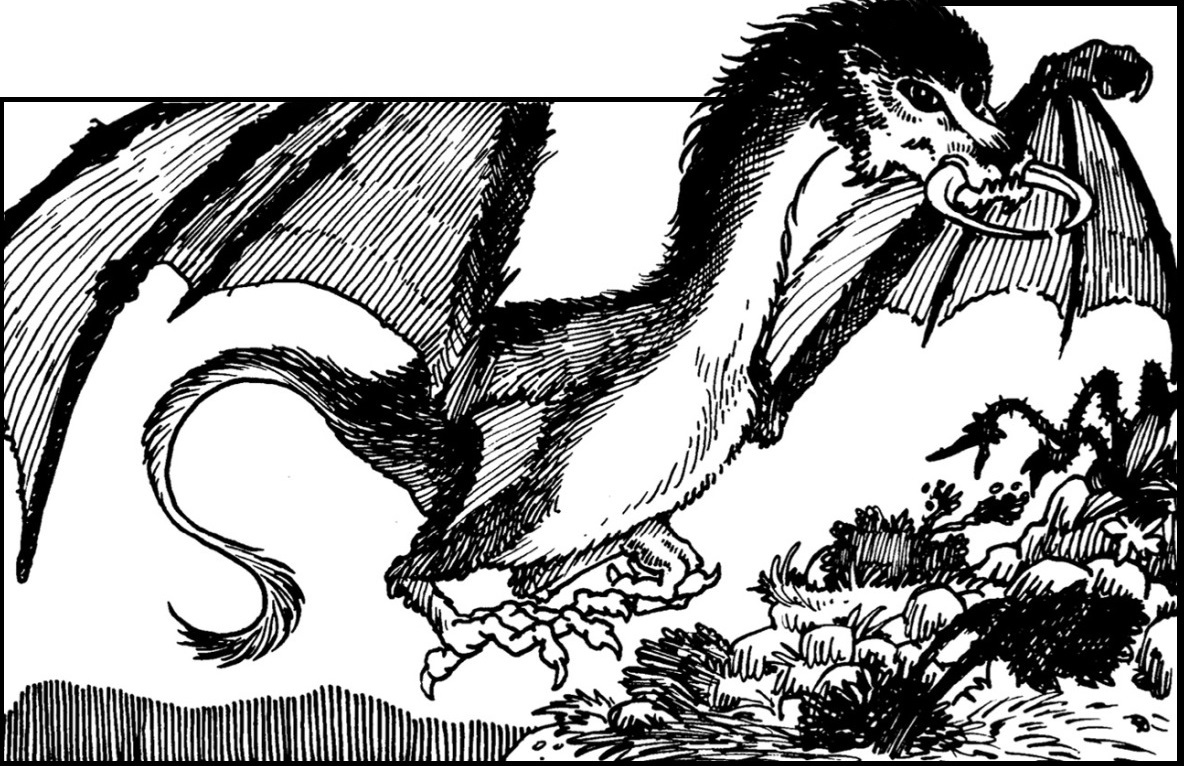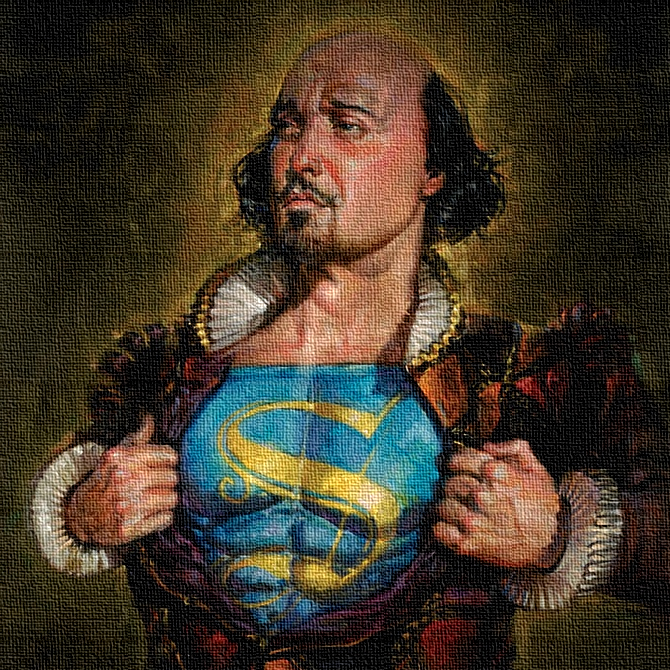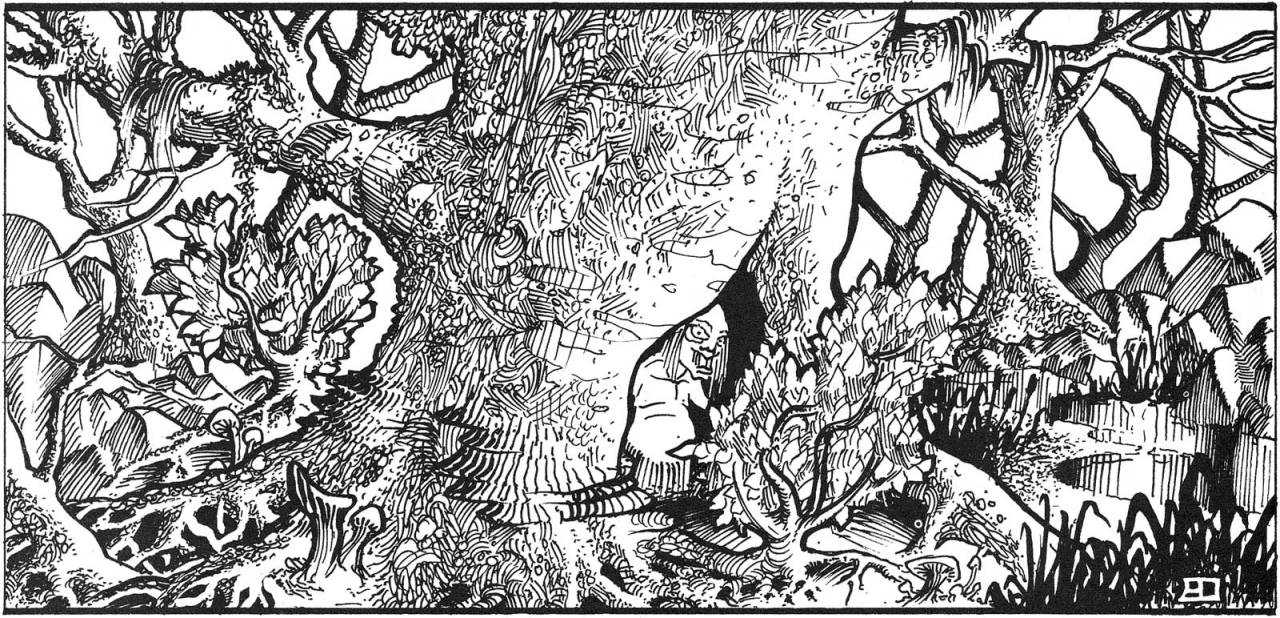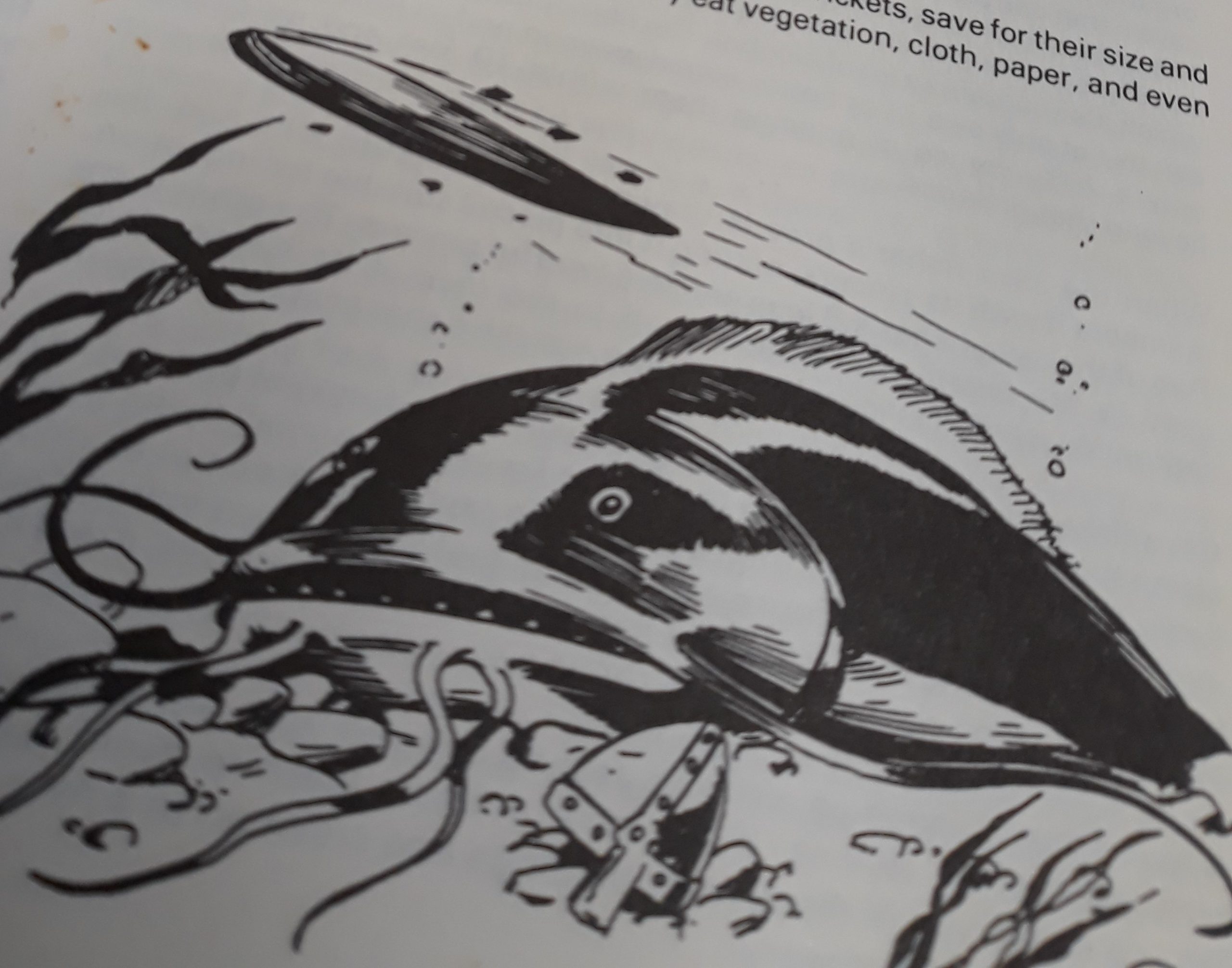The Yexil
I’ve not posted a new monster for 5E D&D since December 2020. Shocking, I know. So, to remedy that oversight, here’s an oldie-but-goodie glommed from 1978’s Gamma World from TSR. Merry Christmas in July!
N.B. That link goes to my DriveThruRPG store’s products, which are on sale for a few more days.

Standing nearly 10 feet tall with a wingspan of just over 25 feet, the yexil move clumsily on the ground but with grace while in flight. It has deep orange fur, a sinuous neck, and a leonine head with large eyes and insect-like mandibles. Yexils are omnivores with a fondness for eating manufactured clothing, the more colorful and fashionable the better.
Yexil
Large beast, neutral
Armor Class 14 (natural armor)
Hit Points 75 (10d10+20)
Speed 25 ft., fly 75 ft.
STR 18 (+4), DEX 11 (+0), CON 15 (+2), INT 8 (-1), WIS 13 (+1), CHA 10 (+0)
Saving Throws CON +4
Skills Perception +3
Damage Resistances cold
Senses passive Perception 13
Languages understands Common but can’t speak
Challenge 4 (1,100)
Dive Attack. If the yexil is flying and dives at least 30 feet straight toward a target and then hits it with a melee weapon attack, the attack deals an extra 9 (2d8) damage to the target.
Flyby. The yexil doesn’t provoke an opportunity attack when it flies out of an enemy’s reach.
Keen Sight. The yexil has advantage on Wisdom (Perception) checks that rely on sight.
Actions
Multiattack. The yexil makes two attacks: one with its mandibles and one with its talons.
Mandibles. Melee Weapon Attack: +6 to hit, reach 10 ft., one target. Hit: 8 (1d8+4) piercing damage.
Talons. Melee Weapon Attack: +6 to hit, reach 5 ft., one target. Hit: 13 (2d8+4) slashing damage, and the target is grappled (escape DC 14). Until this grapple ends, the target is restrained, and the yexil can’t use its talons on another target.
Searing Eyes (Recharge 5-6). The yexil fires twin beams of intense heat from its eyes, affecting a line 75-foot long line that is 10 feet wide. Each creature in that line must make a DC 14 Dexterity saving throw, taking 17 (5d6) fire damage on a failed save, or half as much damage on a successful one.





